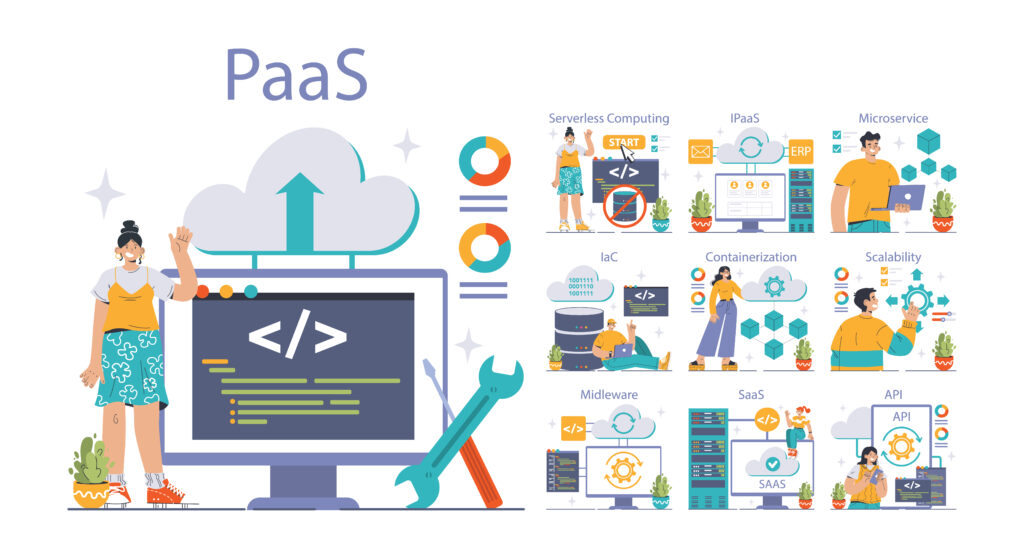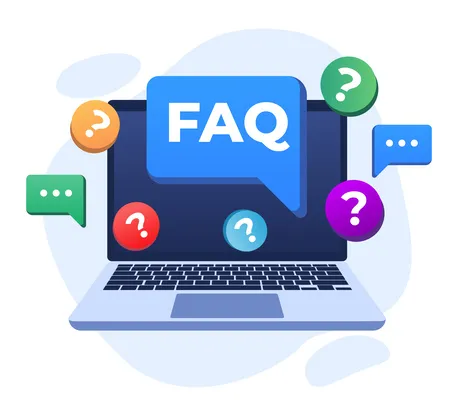Introduction to Platform as a Service (PaaS)
As businesses navigate the complexities of digital transformation, selecting the right cloud computing model has become essential. Platform as a Service, or PaaS, is one of the key cloud service models that help businesses streamline their operations, enhance productivity, and support application development without the hassle of managing the underlying infrastructure. In this post, we’ll dive into what PaaS is, its benefits, and why it’s becoming a popular choice for companies across various sectors.

Overview of PaaS: Definition and How It Works
What Is PaaS?
PaaS, or Platform as a Service, is a cloud computing model that delivers a framework for developers to build, test, and deploy applications without needing to manage the backend infrastructure. Unlike IaaS (Infrastructure as a Service), which provides virtual machines and storage, PaaS offers a complete development environment that includes everything from operating systems and databases to middleware and development tools.
How Does PaaS Work?
PaaS providers host the hardware and software on their infrastructure, offering users remote access to a comprehensive platform for developing and deploying applications. This cloud model offloads the responsibility of infrastructure management from the user, allowing businesses to focus on their core applications and services.
Key Components of PaaS
- Operating Systems: Provides a base for application deployment.
- Middleware: Connects applications, managing communication and data.
- Development Tools: Offers tools for coding, debugging, testing, and version control.
- Databases: PaaS platforms typically come with managed database solutions.
- Application Hosting and Deployment Tools: Simplify deployment processes.
Benefits of PaaS: Why Choose Platform as a Service?
Accelerated Development
- Streamlined Workflow: With pre-configured development environments, teams can begin development without setup delays.
- Rapid Prototyping: Developers can quickly prototype applications, bringing ideas to market faster.
Cost Efficiency
- Reduced Infrastructure Costs: PaaS eliminates the need to invest in costly hardware, reducing capital expenditure.
- Pay-As-You-Go Model: Most PaaS solutions are billed based on usage, making it affordable for businesses of all sizes.
Enhanced Scalability
- Automatic Scaling: PaaS platforms can automatically adjust resources based on demand.
- Flexible Resources: Businesses can scale resources up or down depending on project requirements, making it easy to manage fluctuations in traffic.
Focus on Core Competencies
- No Infrastructure Management: Since PaaS providers manage the infrastructure, developers can focus on coding, testing, and innovating.
- Enhanced Productivity: Developers save time on backend maintenance, increasing overall productivity.
Access to Advanced Tools and Frameworks
- Cutting-Edge Technology: PaaS providers often offer access to the latest development tools and technologies.
- Cross-Platform Development: PaaS supports development for multiple platforms, such as web and mobile, enabling consistent application experiences across devices.
Common Use Cases for PaaS
Application Development and Deployment
- Web and Mobile Applications: PaaS is ideal for creating, testing, and deploying web and mobile applications with robust scalability and performance.
- API Development: PaaS environments make it easy to develop APIs that facilitate communication between different software components.
Streamlining DevOps Processes
- CI/CD Pipelines: PaaS supports Continuous Integration and Continuous Deployment (CI/CD), enabling rapid and automated deployment cycles.
- Version Control: Many PaaS platforms offer integrated version control, making it easier for teams to collaborate and manage code.
Data Management and Analytics
- Data Storage and Processing: With managed databases, PaaS can support data-heavy applications, providing seamless integration for data storage and processing.
- Big Data and Analytics: Companies can use PaaS platforms for data analysis and visualization without setting up complex infrastructure.
Internet of Things (IoT) Applications
- Real-Time Data Processing: PaaS enables IoT applications to process and manage real-time data, supporting use cases in industries like healthcare and manufacturing.
- Integration with IoT Devices: PaaS platforms facilitate the integration of various IoT devices, ensuring data can be collected, processed, and analyzed in one ecosystem.
Artificial Intelligence and Machine Learning (AI/ML)
- Model Development and Training: PaaS offers tools and frameworks specifically designed for AI/ML development.
- Data Management for ML: With integrated data pipelines, PaaS platforms help manage datasets and facilitate machine learning model training.
Key Features to Look for in a PaaS Solution
Security and Compliance
- Security features like identity management, encryption, and regular compliance audits are essential for safeguarding data and applications.
Development Frameworks and Language Support
- Consider whether the PaaS platform supports preferred languages and frameworks, such as Java, Python, Node.js, or Ruby.
Integrated Development Tools
- PaaS should offer development tools for application lifecycle management, such as coding environments, testing tools, and version control.
Resource Scalability and Management
- A good PaaS solution will offer autoscaling and resource management capabilities to handle fluctuating workloads.
Managed Database Options
- Look for platforms offering a variety of database services to support diverse application requirements.
Advantages of PaaS Over Other Cloud Models
PaaS vs. IaaS (Infrastructure as a Service)
- IaaS provides only the basic infrastructure (servers, storage) without additional tools, whereas PaaS delivers a fully managed environment for application development and deployment.
PaaS vs. SaaS (Software as a Service)
- While SaaS delivers ready-to-use applications, PaaS provides a platform for building custom applications, giving developers more flexibility.
Why PaaS Is Ideal for Modern Development
- PaaS bridges the gap between IaaS and SaaS, combining infrastructure management with developer-centric tools, making it ideal for companies that need to build and manage applications without extensive backend infrastructure.
Challenges and Considerations for PaaS Adoption
Limited Control Over the Backend
- Users rely on the provider’s infrastructure, which can limit flexibility for customization and configurations.
Potential Vendor Lock-In
- With proprietary tools and APIs, switching providers can be challenging, making it important to evaluate long-term compatibility before committing to a platform.
Security and Compliance
- Although PaaS providers offer robust security measures, companies are responsible for managing data compliance, especially in regulated industries like healthcare and finance.
Downtime and Service Reliability
- As PaaS solutions are cloud-based, downtime on the provider’s end can affect accessibility. Businesses should review service-level agreements (SLAs) before adoption.
FAQs About Platform as a Service (PaaS)
What’s the difference between PaaS, IaaS, and SaaS?
- PaaS provides a managed development environment, IaaS delivers raw infrastructure, and SaaS offers complete software solutions.
Do I need coding skills to use PaaS?
- While PaaS simplifies backend management, it is still aimed at developers and generally requires coding skills for application development.
Is PaaS secure?
- PaaS providers offer a range of security features, but users should ensure compliance with industry standards and best practices for data security.
Can I migrate my applications from one PaaS provider to another?
- Yes, though it can be challenging due to proprietary tools and configurations. Consider compatibility when choosing a provider.
Which industries benefit most from PaaS?
- PaaS is widely used in sectors like finance, healthcare, e-commerce, and technology for its scalability and development efficiency.
Conclusion:
Platform as a Service (PaaS) has emerged as a valuable asset for developers and businesses, enabling rapid application development, scalability, and resource optimization. By handling infrastructure management, PaaS allows developers to focus on innovation and quality, making it a powerful solution for building resilient applications in the cloud.
For businesses looking to scale their digital presence, embrace IoT and AI technologies, or streamline application development, PaaS is a compelling choice that offers flexibility and long-term value.






























